Transcription of Guide for Modeling and Calculating Shrinkage
1 Disclaimer: Bazant voted against the statistical model comparisons in this Guide and believes them to be misleading. His name appears since this was mandatory for committee members. ACI Guide for Modeling and Calculating Shrinkage ./ and Creep in Har~ened concrete Reported by ACI Committee 209 Akthem A. AI-Manaseer Zdenek P. Bazant J eff~ey J. Brooks Ronald G. Burg Mario Alberto Chiorino Carlos C. Videla' Chair MaI'\van A . Daye Walter H. Dilger Noel J. Gardner' Will Hansen Hesham Marzouk *Members of the subcommittee that prepared this Guide . This Guide is intended for the prediction of Shrinkage and creep in compression in hardened concrete . It may be assumed that predictions apply to concrete under tension and shear. It outlines the problems and limitations in developing prediction equations jor Shrinkage and compressive creep of hardened concrete . It also presents and compares the prediction capabilities offour different numerical methods. The models presented are valid jar hardened concrete moist cured for at least 1 day and loaded after curing or later.
2 The models are intended jar concretes with mean compressive cylindrical strengths at 28 days within a range oj at least 20 to 70 MPa (3000 to 10,000 psi). This document is addressed to designers who wish to predict Shrinkage and creep in concrete without testing. For structures that are sensitive to Shrinkage and creep, the accuraCj of an individual model's predictions can be improved and their applicable range expanded if the model is calibrated' with test data oj the actual concrete to be used in the project. Keywords: creep; drying Shrinkage ; prediction models; statistical indicators. ACI Committee Reports, Guides, Manuals, Standard Practices, and Commentaries are intended for guidance in planning, designing, executing, and inspecting construction. This document is intended for the use of individuals who are competent to evaluate the significance and limitations of its content and recommendations and who will accept responsibility for the application of the material it contains.
3 The American concrete Institute disclaims any and all responsibility for the stated principles. The Institute shall not be liable for any loss or damage arising therefrom. Reference to this document shall not be made in contract documents. If items found in this document are desired by the ArchitectiEngineer to be a part of the contract documents, they shall be restated in mandatory language for incorporation by the ArchitectlEngineer. Domingo J. Carreira' Secretary David B . McDonald' Harald S. Mueller Ham H. A. Nassif Lawrence C. Novak Klaus Alexander Rieder Ian Robertson Kenji Sakata K. Nam Shiu W. Jason Weiss CONTENTS Chapter 1-lntroduction and scope, p. 1. I-Background assumptions for development of prediction models Chapter 2-Notation and definitions, p. 2. I-Notation Chapter 3-Prediction models, p. 3 . I-Data used for evaluation of models 3 .2-Statistical methods for comparing models 3 .3-Criteria for prediction models of strains 3 .5-Evaluation criteria for creep and Shrinkage models Chapter 4-Model selection, p.
4 209R-92 model B3 model MC90-99 model model comparisons about models ACI was adopted and published May 2008. Copyright 2008, American concrete Institute. ' . !. ,. All rights reserved including rights of reproduction and use in any form or by any means, including the making of copies by any photo process, or by electronic or mechanical device, printed, written, or oral, or recording for sound or visual reproduction or for use in any knowledge or retrieval system or device, unless permission in writing is obtained from the copyright proprietors. 1 ACI COMMITIEE REPORT Chapter 5-References, p. standards and reports references Appendix A-Models, p. 209R-92 model B3 model MC90-99 model model Appendix B-Statistical indicators, p. coefficient of variation (til Bp%) method statistical indicators Gardner coefficient of variation (IDG) Appendix C-Numeric examples, p. 209R-92 model solution B3 model solution MC90-99 model solution model solution comparison of model predictions CHAPTER 1-INTRODUCTION AND SCOPE To predict the strength and serviceability of reinforced and prestressed concrete structures, the structural engineer requires an appropriate description of the mechanical properties of the materials, including the prediction of the time-dependant strains of the hardened concrete .
5 The prediction of Shrinkage and creep is important to assess the risk of concrete cracking, and deflections due to stripping-reshoring. As discussed in ACI , however, the mechanical properties of concrete are significantly affected by the temperature and availability of water during curing , the environmental humidity and temper-ature after curing , and the composition of the concrete , including the mechanical properties of the aggregates. Among the time-dependant properties of concrete that are of interest to the structural engineer are the Shrinkage due to cement hydration (self-desiccation), loss of moisture to the environment, and the creep under sustained loads. Drying before loading significantly reduces creep, and is a major complication in the prediction of creep, stress relaxation, and strain recovery after unloading. While there is a lot of data on Shrinkage and compressive creep, not much data are available for creep recovery, and very limited data are available for relaxation and tensile creep.
6 Cre~p under variable stresses and the stress responses under constant or variable imposed strains are commonly determined adopting the principle of superposition. The limitations of this assumption are discussed in Section Further, the experimental results of Gamble and Parrott (1978) indicate that both drying and basic creep are only partially, not fully, recoverable. In general, provided that water migration does not occur as in sealed concrete or the interior of large concrete elements, superposition can be used to calculate both recovery and relaxation. The use of the compressive creep to the tensile creep in calculation of beam's time-dependant deflections has been successfully applied in the work by Branson (1977), Bazant and Ho (1984), and Carreira and Chu (1986). The variability of Shrinkage and creep test measurements prevents models from closely matching experimental data. The within-batch coefficient of variation for laboratory-measured Shrinkage on a single mixture of concrete was approximately 8% (Bafant et al.)
7 1987). Hence, it would be unrealistic to expect results from prediction models to be within plus or minus 20% of the test data for Shrinkage . Even larger differences occur for creep predictions. For structures where Shrinkage and creep are deemed critical, material testing should be undertaken and long-term behavior extrapolated from the resulting data. For a discussion of testing for Shrinkage and creep, refer to Acker (1993), Acker et al. (1998), and Carreira and Burg (2000). This document was developed to address the issues related to the prediction of creep under compression and Shrinkage -induced strains in hardened concrete . It may be assumed, however, that predictions apply to concrete under tension and shear. It outlines the problems and limitations in developing prediction equations, presents and compares the prediction capabilities of the ACI 209R-92 (ACI Committee 209 1992), Bazant-Baweja B3 (Bafant and Baweja 1995, 2000), CEB MC90-99 (Muller and Hillsdorf 1990; CEB 1991, 1993, 1999), and GL2000 (Gardner and Lockman 2001) models, and gives an extensive list of references.
8 The models presented are valid for hardened concrete moist cured for at least 1 day and loaded at the end of 1 day of curing or later. The models apply to concretes with mean compressive cylindrical strengths at 28 days within a range of at least 20 to 70 MPa (3000 to 10,000 psi). The prediction models were calibrated with typical composition concretes, but not with concretes containing silica fume, fly ash contents larger than 30%, or natural pozzolans. Models should be calibrated by testing such concretes. This document does not provide information on the evaluation of the effects of creep and Shrinkage on the structural performance of concrete structures. assumptions for development of prediction models Various testing conditions have been established to stan-dardize the measurements of Shrinkage and creep. The following simplifying assumptions are normally adopted in the development of prediction models. Shrinkage and creep are additive-Two nominally identical sets of specimens are made and subjected to the same curing and environment conditions.
9 One set is not loaded and is used to determine Shrinkage , while the other is generally loaded from 20 to 40% of the concrete compressive strength. Load-induced strains are determined by subtracting the measured Shrinkage strains on the nonloaded specimens from the strains measured on the loaded specimens. Therefore, it is assumed that the Shrinkage and creep are independent of each Tests carried out on sealed specimens, with no moisture movement from or to the specimens, are used to determine autogenous Shrinkage and basic creep. Modeling AND Calculating Shrinkage AND CREEP IN HARDENED concrete 3 Linear aging model for creep-Experimental research indicates that creep may be considered approxi-mately proportional to stress (L'Hermite et al. 1958; Keeton 1965), provided that the applied stress is less than 40% of the concrete compressive strength. The strain responses to stress increments applied at different times may be added using the superposition principle (McHenry 1943) for increasing and decreasing stresses, provided strain reversals are excluded (for example, as in relaxation) and temperature and moisture content are kept constant (Le Camus 1947; Hanson 1953; Davies 1957; Ross 1958; Neville and Dilger 1970; Neville 1973; BaZant 1975; Gamble and Parrot 1978; RlLEM Technical Committee TC-69 1988).
10 Major deviations from the principle of superposition are caused by the neglect of the random scatter of the creep properties, by hygrothermal effects, including water diffusion and time evolution of the distributions of pore moisture content and temperature, and by material damage, including distributed cracking and fracture, and also frictional microslips. A comprehensive summary of the debate on the applicability of the principle of superposition when dealing with the evaluation of creep structural effects can be found in the references (BaZant 1975, 1999, 2000; CEB 1984; RILEM Technical Committee TC-1 07 1995; Al Manaseer et al. 1999; Jirasek and BaZant 2002; Gardner and Tsuruta 2004; Bazant 2007). Separation of creep into basic creep and drying creep-Basic creep is measured on specimens that are sealed to prevent the ingress or egress of moisture from or to its environment. It is considered a material constitutive property and independent of the specimen size and shape.



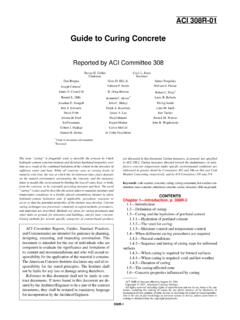
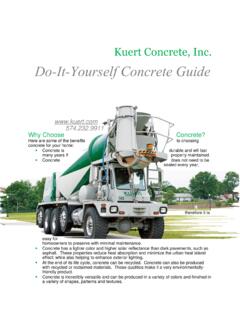
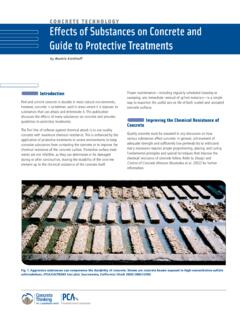
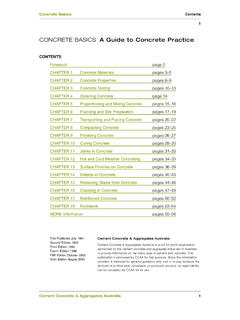
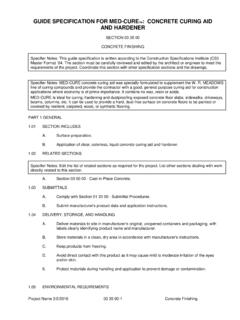
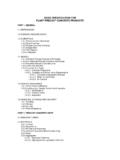

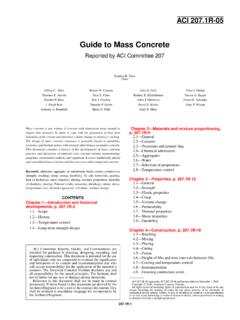
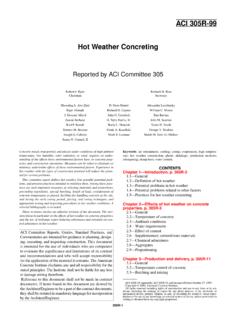
![6ITSVXIH F] %'- 'SQQMXXII - dl.mycivil.ir](/cache/preview/4/b/b/f/2/e/8/1/thumb-4bbf2e81b2b2df04c22714e49f0954ce.jpg)